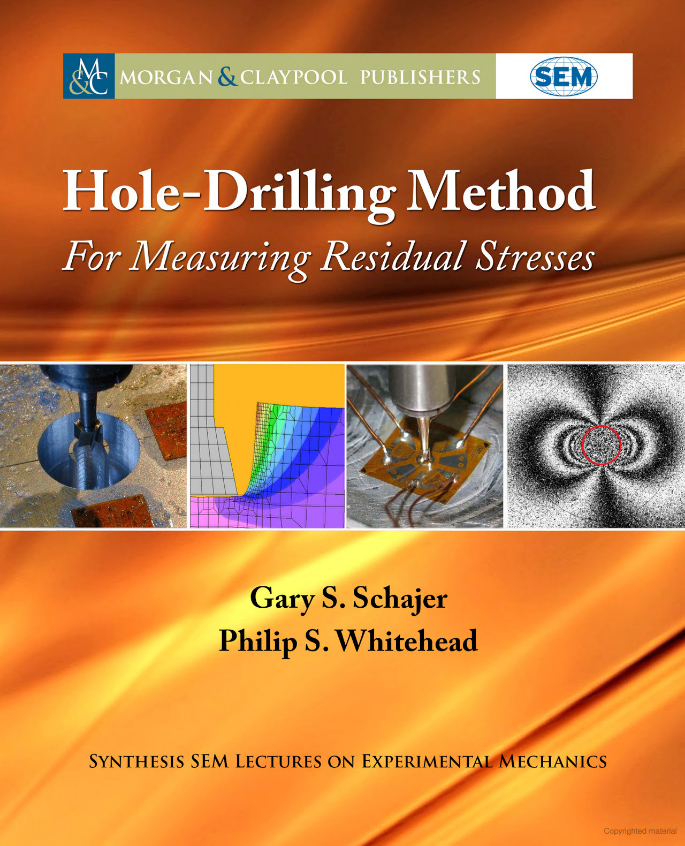We’d like to share with our loyal followers a new book: Hole Drilling Method for Measuring Residual Stresses, written by Gary S. Schajer and Philip S. Whitehead. As you all know, Hole Drilling measures near-surface residual stress. The Hole Drilling method can be applied to quantify the average residual stress over the depth of a drilled hole (typically 1.0 mm depth). It can also be applied to determine the distribution of residual stress versus depth from the surface to a depth of half the hole diameter. Hole Drilling is portable and is a common method for residual stress measurement that can be applied under a variety of circumstances, including in the field.
The following description of the book is copied from the publisher’s website:
This book describes the theory and practice of the Hole-Drilling Method for measuring residual stresses in engineering components. Such measurements are important because residual stresses have a “hidden” character because they exist locked-in within a material, independent of any external load. These stresses are typically created during component manufacture, for example, during welding, casting, or forming. Because of their hidden nature, residual stresses are difficult to measure and consequently are often ignored. However, they directly add to loading stresses and can cause catastrophic failure if not properly included during engineering design. Thus, there is an urgent need to be able to identify and measure residual stresses conveniently and reliably.
The Hole-Drilling Method provides an adaptable and well-proven method for measuring residual stresses in a wide range of materials and component types. It is convenient to use and gives reliable results. Because of the hidden nature of residual stresses, the measurement method must necessarily be indirect, thus, additional care and conceptual understanding are necessary to achieve successful results. This book provides a practical introduction to the Hole-Drilling Method, starting from its historical roots and going on to focus on its modern practice. The various chapters describe the nature of residual stresses, the principle of hole-drilling measurements, procedures and guidance on how to make successful measurements, and effective mathematical procedures for stress computation and analysis. The book is intended for practitioners who need to make residual stress measurements either occasionally or routinely, for practicing engineers, for researchers, and for graduate engineering and science students.
We have a copy of the book here in our library at Hill Engineering and many of our staff have already enjoyed reading it. The book contains a lot of useful information about the Hole Drilling method for residual stress measurement.
If you would like to order a copy for yourself you can get it from the publisher’s website, Amazon, or your other favorite location.

New book on Hole-Drilling Method for Measuring Residual Stresses